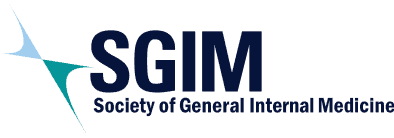Why did NASEM convene a study on implementing high-quality primary care?
Primary care is severely challenged in terms of daily practice, workforce pipeline, access barriers, and inequitable outcomes; yet, primary care has never been more necessary. We know what high-quality primary care can look like—grounded in longitudinal relationships between interprofessional primary care teams and the individual, family, and community, tailored to their needs, and delivered in varied settings. In 2020, NASEM convened a committee to examine the current state of primary care in the United States and develop an implementation plan to build upon the recommendations from the 1996 Institute of Medicine’s report, ‘Primary Care: America’s Health in a New Era,’ to strengthen primary care services in the United States, especially for underserved populations, and to inform primary care systems around the world.1
What are the objectives of the NASEM committee’s plan for implementing high-quality primary care?
The plan has five objectives: 1) pay for primary care teams to care for people, not doctors to deliver services; 2) ensure that high-quality primary care is available to every individual and family in every community; 3) train primary care teams where people live and work; 4) design information technology that serves the patient, family, and interprofessional care team; and 5) ensure that high-quality primary care is implemented.1
How could SGIM members act upon recommendations in the committee’s report?
SGIM members are positioned to act, given their expertise in primary care practice, education, research, and implementation science, and their commitment to achieving a just system of care. Members could implement and evaluate changes recommended by the committee, such as asking practices to assume an ongoing relationship with uninsured people they are treating, and engaging community members in team-based practice design. More data on the impact of changes could help to guide future policy making. Members also could help train primary care teams in how to function in rapidly changing environments, making primary care practice more joyful and diversifying the primary care workforce.
SGIM’s Health Policy Committee (HPC) could advocate for recommended actions, including: 1) payers should evaluate and disseminate aligned payment models based on the ability to promote high-quality team-based primary care, increase spending on primary care, catalyze empanelment efforts connecting all patients to primary care teams, and ensure that health systems in risk-based contracts provide sufficient funds for primary care services; 2) the Department of Health and Human Services (HHS) should invest in new health centers for federally designated shortage areas; 3) the Centers for Medicare & Medicaid Services (CMS) should improve access to primary care services for Medicaid beneficiaries and extend support for COVID-19 rule revisions facilitating team-based care and virtual visits, as well as support continued transformation of payment models away from fee-for-service (FFS); 4) the Health Resources and Services Administration (HRSA) should enhance incentives for interprofessional care team members to enter primary care in underserved areas; 5) HRSA and CMS should increase funding for interprofessional training in community-based settings; 6) the Office of the National Coordinator for Health Information Technology should design information technology that better serves patients, families, and the primary care team; and 7) HHS should prioritize funding for primary care research and establish a Council on Primary Care to ensure the plan is implemented. SGIM may need to partner with other organizations to urge states to implement primary care payment reform, and to develop a scorecard for monitoring progress in implementing the plan.
To what extent are the NASEM committee’s recommendations consistent with the call for fundamental changes in primary care financing?
In December 2020, SGIM joined six primary care organizations in calling for “investment in health as the new paradigm for financing primary care as a public good.”2, 3 The proposed paradigm would enhance the ability of primary care teams to provide comprehensive care and collaborate with community organizations to address social determinants of health. A new paradigm would help support relationship-centered team-based care and ensure appropriate payment for addressing preventive care and social drivers of health.
SGIM’s HPC will need to discuss the call for shifting primary care payment toward hybrid (part FFS, part capitated) models that reflect the heterogeneous nature of primary care practice, as this falls short of a more uniform change in primary care financing toward full capitation. Yet, the NASEM report still highlights the corrosive nature of FFS payment on primary care practice, and resultant need for fundamental changes. It will be impossible to implement all the NASEM committee’s recommendations without investing more and differently in the primary care system, creating fiscal space for practice and workforce transformation to occur. We hope SGIM’s members join their primary care colleagues in advocating for a paradigm shift in primary care financing while also supporting the bold actions recommended by the NASEM committee.
References
-
National Academies of Sciences, Engineering, and Medicine. 2021. Implementing high-quality primary care: Rebuilding the foundation of health care. Washington, DC: The National Academies Press, https://doi.org/10.17226125983.
-
Primary care speaks as one: Unified voice, unified vision, changing primary care finance. https://www.newprimarycareparadigm.org/. Accessed May 15, 2021.
-
Bass EB, Schwartz MD, Staiger T. Q & A with SGIM’s CEO and Chairs of the Leadership in Health Policy Program: Coalition Advocacy for a New Paradigm for Primary Care Financing. SGIM Forum. https://connect.sgim.org/sgimforum/viewdocument/q-a-with-sgims-ceo-and-chairs-of. 2021;44(2):4-5.
Issue
Topic
Advocacy, Health Policy & Advocacy, Medical Education, Research, SGIM, Social Determinants of Health
Author Descriptions
Dr. Bass (basse@sgim.org) is the CEO of SGIM. Drs. Bitton (abitton@bwh.harvard.edu), Cooke (Molly.Cooke@ucsf.edu), Kangovi (shreya.kangovi@pennmedicine.upenn.edu), and Leykum (Luci.Leykum@austin.utexas.edu) are SGIM members who served on the NASEM Study Committee.
Share
More to Learn, More to Teach
This content is an exclusive benefit for SGIM members. If you’re a…
Ask an Ethicist: Caring for an Incarcerated Patient
This content is an exclusive benefit for SGIM members. If you’re a…


